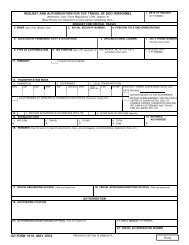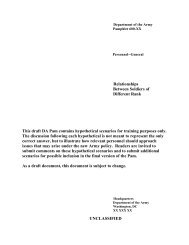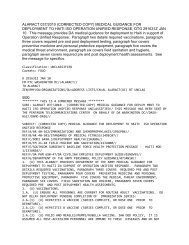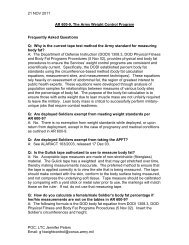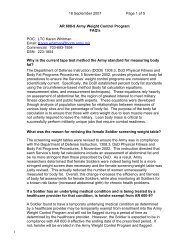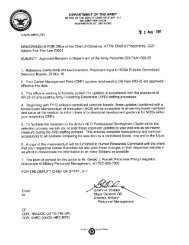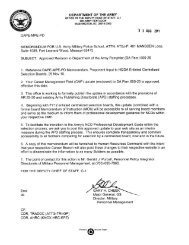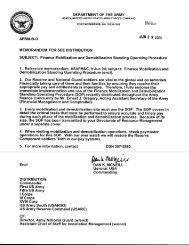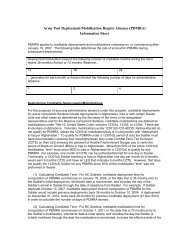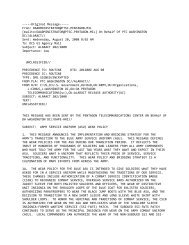Unit Equal Opportunity Training Guide - Deputy Chief of Staff ARMY ...
Unit Equal Opportunity Training Guide - Deputy Chief of Staff ARMY ...
Unit Equal Opportunity Training Guide - Deputy Chief of Staff ARMY ...
You also want an ePaper? Increase the reach of your titles
YUMPU automatically turns print PDFs into web optimized ePapers that Google loves.
pregnancy was revealed.<br />
Note. Ask the following question: “What are some <strong>of</strong> the major concerns or problems a leader might face in managing a culturally<br />
diverse organization?” After several responses discuss the following:<br />
9–4. MISUNDERSTANDINGS BASED UPON COMMUNICATIONS<br />
Although English is the language used for all <strong>of</strong>ficial Army matters, communication problems still exist. Here are some<br />
<strong>of</strong> the reasons:<br />
Note. Show OT 9–3, FACTORS CAUSING COMMUNICATION PROBLEMS.<br />
Figure 9–3. Factors Causing Communication Problems<br />
9–5. COMMUNICATION STYLE<br />
a. Even when the same language is used, people create and interpret information differently. Therefore, the message<br />
intended is not always the message received.<br />
b. Differences in communication styles can make the sender <strong>of</strong> the message appear to be pushy, rude, aggressive,<br />
passive, etc. Factors involved in this are volume and rapidity <strong>of</strong> speech, tone <strong>of</strong> voice, and emphasis on key words.<br />
9–6. NONVERBAL COMMUNICATION<br />
a. Nonverbal communication is the sum total <strong>of</strong> our body’s communication. It is how our body communicates or<br />
sends a message. Nonverbal communication changes meaning with time and has different meanings for different people<br />
or groups.<br />
b. Studies show that 50 percent <strong>of</strong> a message’s impact comes from body movements or nonverbal communication.<br />
For example, crossing your arms indicates defiance. Putting your hand on your chin shows thought.<br />
c. Leaders need to understand the importance <strong>of</strong> checking nonverbals when communicating. This might give them a<br />
clearer picture <strong>of</strong> how the soldier is reacting to the discussion. However, we cannot assume that we understand what<br />
the body language is saying. We must check for clarity when verbal or nonverbal messages are being sent.<br />
9–7. TRUST<br />
a. Trust plays an important role in intercultural, interracial, and inter-gender communication. Some ethnic groups<br />
and women are sometimes suspicious <strong>of</strong> their supervisors. Because experiences may have led them to be leery, there<br />
may sometimes be problems with the interactions.<br />
b. A lack <strong>of</strong> trust can result not only in miscommunications, but also in no communications.<br />
9–8. ACCENTS<br />
a. Some people react negatively to accents. They may even be rude when someone does not speak “proper” English.<br />
b. People have accents either because <strong>of</strong> ethnicity or region <strong>of</strong> country from which they come or because English is<br />
their second language. Some people consider them to be less intelligent, less competent, and even less trustworthy.<br />
c. Leaders need to judge if accent interferes with the ability to communicate or perform. If accents do not interfere,<br />
then individuals need to focus more on listening to what is being said, and not on how it is said.<br />
9–9. JARGON<br />
a. People make judgments about others based on the kinds <strong>of</strong> expressions they use because <strong>of</strong> the region <strong>of</strong> country<br />
34 DA PAM 350–20 1 June 1994




